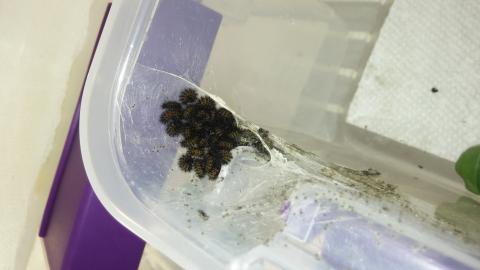Research Snapshot: Experimental thermal Ecology
Climate change is affecting butterflies in a variety of ways, including changes in their distribution, the timing of their activities (phenology), and the number of generations they have in a year (voltinism). Butterfly body temperature is highly dependent of environmental conditions and it determines caterpillar development rate and in some species, the onset of diapause. We are using growth chambers to subject caterpillars of both Baltimore Checkerspots and Silver Spotted Skippers to determine the minimum temperature required for development, the optimum temperature, which maximizes development rate and the range of stressful temperatures, which are so high or so low that development slows down and survival is compromised. We will use these data to inform models to forecast the distribution of butterflies under climate change scenarios. Our Baltimore Checkerspots will be dormant for the rest of the year and our Silver Spotted Skippers are developing in our growth chambers.
Details
Publications
Abarca, M., E. Larsen, J.T. Lill, M. Weiss, E. Lind, L. Ries. 2018. Inclusion of host quality data improves predictions of herbivore phenology. Entomologia Experimentalis et Applicata 166 (8), 648-660
Abarca, M., Lill, J. T., & Frank-Bolton, P. (2018). Latitudinal variation in responses of a forest herbivore and its egg parasitoids to experimental warming. Oecologia, 186(3), 869-881.
 The Ries Lab of Butterfly Informatics
The Ries Lab of Butterfly Informatics


